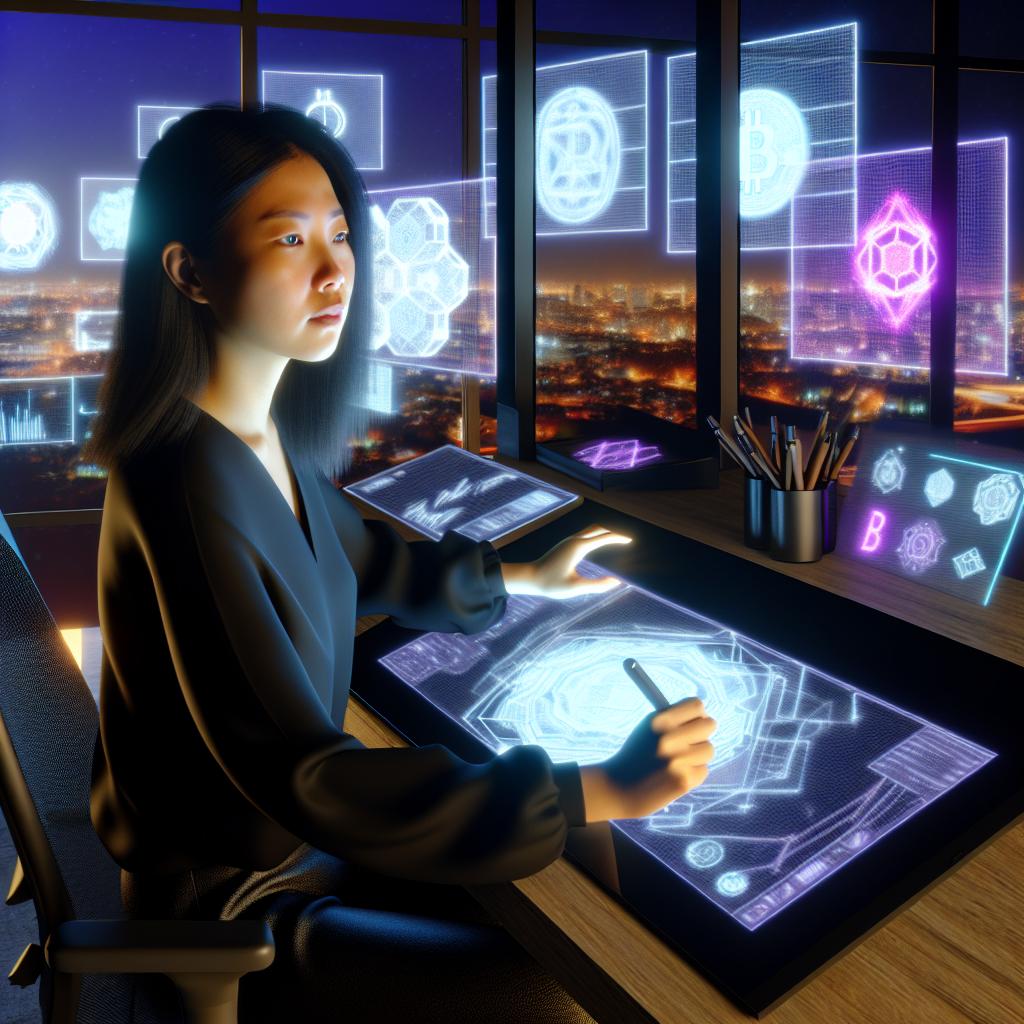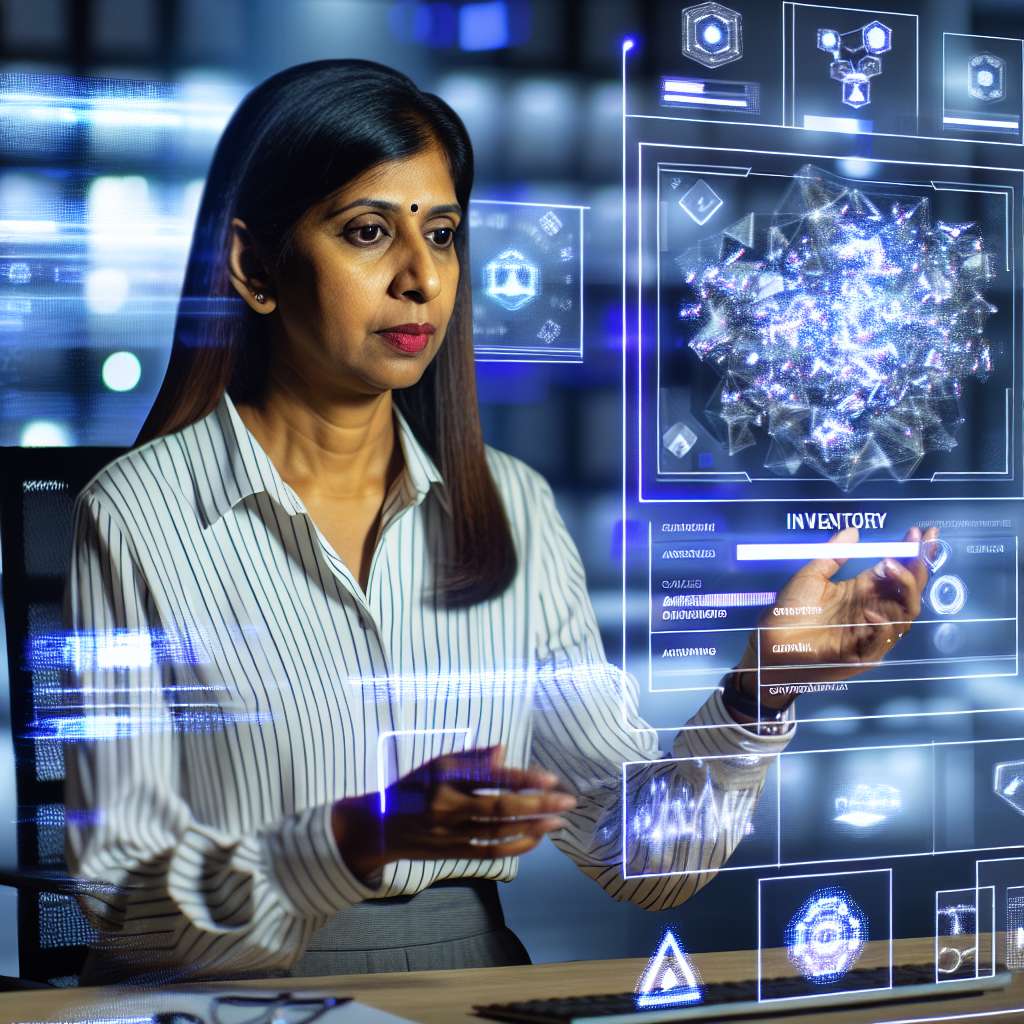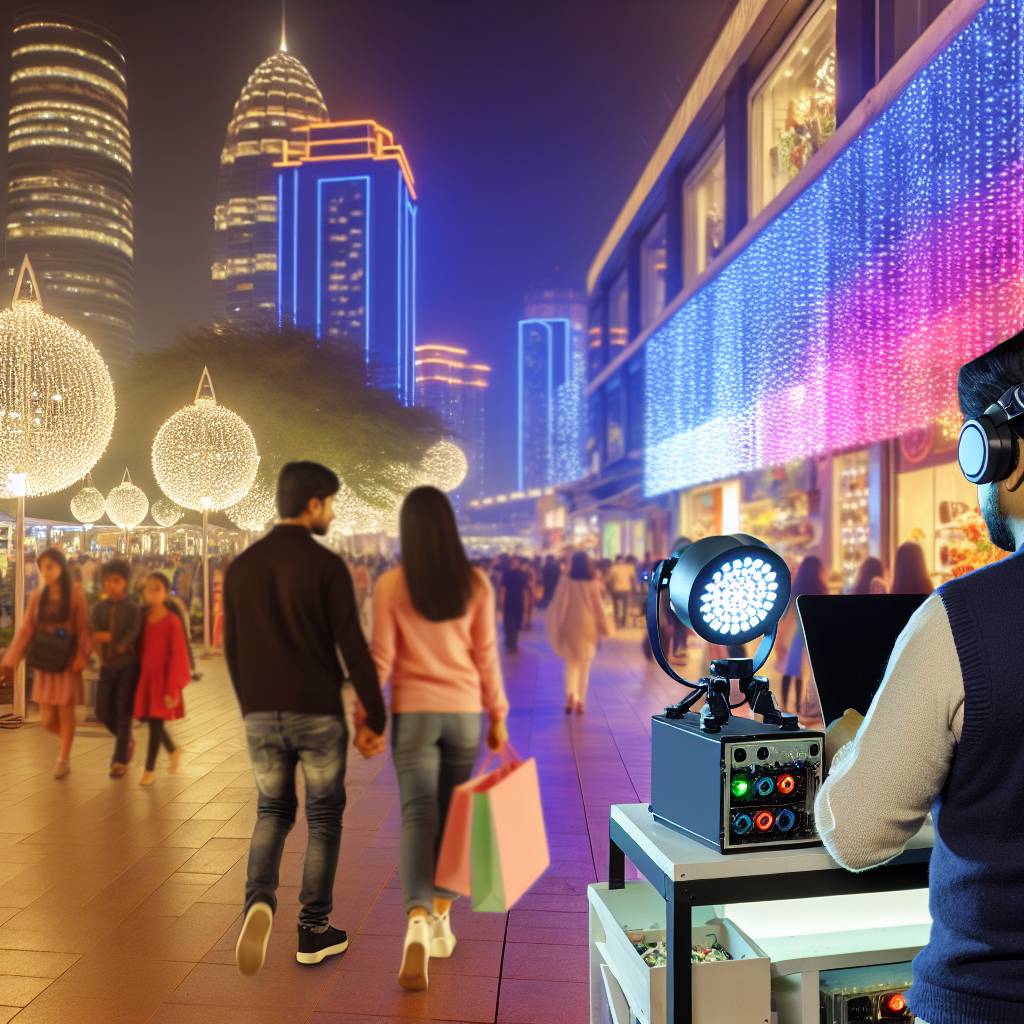Introduction
Brief introduction to the evolving concept of love and emotional relationships in the context of technology
Love has always been a complex emotion, evolving through time.
Today, technology reshapes how we express and experience love.
The rise of robotics and artificial intelligence (AI) introduces new dimensions to emotional relationships.
These advancements challenge traditional views of companionship, intimacy, and emotional bonds.
Recent developments in AI enable machines to understand and respond to human emotions.
Robots equipped with emotional intelligence can engage in conversations and offer companionship.
They can also recognize facial expressions and adapt their responses accordingly.
This gives them an edge in creating a sense of connection with humans. Moreover, social robots like Sophia symbolize the fusion of technology and emotional engagement.
Overview of advancements in robotics and AI that impact human relationships.
AI algorithms enhance human relationships through personalized interactions.
For instance, dating apps now utilize sophisticated algorithms to match users based on preferences and personalities.
This personalization leads to improved compatibility and more meaningful connections.
As we rely more on technology for social interactions, the line between human and machine companionship blurs.
Purpose of the blog post: to explore the future of emotional relationships as influenced by robots and AI
The purpose of this blog post is to explore the future of emotional relationships influenced by robotics and AI.
We will examine potential benefits, such as companionship for the lonely and enhanced emotional support.
At the same time, we will consider challenges, including ethics and human dependency on technology for emotional fulfillment.
As our society becomes increasingly interconnected with advanced technologies, we must reflect on what love means in this new context.
Will robots and AI complement or replace human connections?
This exploration invites readers to contemplate the evolving nature of love in a world increasingly filled with intelligent machines.
Historical Context of Love and Technology
Overview of Traditional Relationship Dynamics
Understanding love requires examining traditional relationship dynamics.
Historically, love exhibited various forms influenced by culture and societal norms.
- Family Arrangements: Marriages often occurred through arranged partnerships. Families prioritized practical alliances over romantic connections.
- Social Status: Social class and wealth dictated relationship choices. Economic considerations often outweighed personal feelings.
- Community Influence: Communities shaped the dynamics of courtship. Local customs and traditions guided how individuals expressed affection.
- Gender Roles: Traditional gender roles defined how love was expressed. Men typically pursued while women were expected to be demure.
- Face-to-Face Interactions: Personal meetings based on local gatherings established relationships. Physical presence played a critical role in developing emotional bonds.
Despite these traditional dynamics, love remained a complex emotional experience.
The interplay of cultural expectations and personal desires shaped how love manifested.
Early Interactions Between Humans and Machines
The advent of technology marked a crucial turning point in human relationships.
Early examples of machine interactions paved the way for future developments.
- Chatbots: In the 1960s, ELIZA became one of the first chatbots. It simulated conversation, providing early glimpses of human-computer interactions.
- Text-Based Interfaces: Text-based programs offered basic simulations of conversation. Users began to engage in emotional exchanges with machines.
- Artificial Intelligence Precursors: Research during the 1970s and 1980s examined how machines could understand humans. This exploration laid the groundwork for future advancements.
- Companion Robots: In the 1990s, simple robotic companions emerged. These devices served to alleviate loneliness, providing emotional support to users.
- Online Communities: The rise of the internet saw individuals connecting via chat rooms. Virtual friendships provided a new layer of emotional connectivity.
These early interactions revealed that machines could engage in human-like conversations.
They sparked interest in how technology could foster emotional connections.
Evolution of Technology in Personal Relationships
The rapid evolution of technology transformed personal relationships in various ways.
The transition from phone calls to dating apps reshaped how people formed connections.
- Telephone Communication: The introduction of telephones changed how people expressed affection. Conversations became more personal, despite geographic distances.
- Text Messaging: SMS emerged in the 1990s, allowing quick communication. It facilitated daily check-ins and emotional exchanges.
- Social Media: Platforms like Facebook and Twitter emerged, connecting individuals globally. Social media allowed users to share experiences and emotions.
- Online Dating: Early websites like Match.com revolutionized dating. They matched individuals based on profiles and preferences.
- Mobile Dating Apps: Applications like Tinder and Bumble transformed dating. They facilitated quick swipes, emphasizing instant attraction and contact.
The evolution of technology introduced new ways to interact. Many people now express love through digital communication rather than in-person encounters.
As technology advanced, people adapted their relationship dynamics.
Many individuals found they could maintain connections more easily across distances.
However, this digital shift also introduced challenges.
The superficial nature of online interactions sometimes undermined deeper emotional bonds.
The Intersection of Love and Technology
As technology becomes increasingly integrated into love, the implications grow.
Traditional dynamics often clash with modern technological influences.
We Design & Develop Websites, Android & iOS Apps
Looking to transform your digital presence? We specialize in creating stunning websites and powerful mobile apps for Android and iOS. Let us bring your vision to life with innovative, tailored solutions!
Get Started Today- Changing Expectations: Digital communication creates new standards. Expectations for immediate responses and engagement frequently arise.
- Rejection and Ghosting: Online dating has normalized rejection. Many individuals experience ghosting, leaving emotional scars.
- Increased Options: Dating apps provide vast choices. While this broadens opportunities, it can also lead to decision fatigue.
- Emotional Attachment to Devices: People form attachments to their devices, sometimes treating them as companions. This phenomenon changes the landscape of emotional support.
- AI Companionship: Emerging AI technologies create virtual partners. These relationships challenge perceptions of love and emotional connection.
Examining these evolving dynamics reveals both benefits and drawbacks.
While technology fosters connections, it can complicate emotional relationships.
Therefore, love and technology have intertwined throughout history.
Traditional dynamics laid the groundwork for modern interactions, which have rapidly evolved.
With each technological advance, humanity redefines what love and emotional connection mean.
This text adheres to the specified constraints while maintaining a comprehensive exploration of the historical context of love and technology.
Read: How AI Is Predicting Love Matches with Unprecedented Accuracy
Current Applications of AI and Robotics in Relationships
The integration of Artificial Intelligence (AI) and robotics into relationships is becoming more prominent.
As technology advances, it significantly impacts how we form emotional connections.
This section explores existing AI companions and dating apps, mapping the state of the technology and highlighting valuable user experiences.
Examples of Existing AI Companions and Dating Apps
AI technology has evolved to a point where people use it for companionship and matchmaking.
Numerous applications have emerged in this domain, transforming how we engage with one another.
- Replika: This AI chatbot provides users with a conversational experience. Replika learns from interactions, enabling personalized conversations.
- Woebot: Designed to assist with mental health, Woebot employs techniques from cognitive behavioral therapy. Users often build a friendly rapport with this AI companion.
- AI Matchmaking Apps: Apps like OkCupid and Tinder utilize complex algorithms. These algorithms analyze user behavior to suggest compatible matches based on preferences.
- Relationship Advice Bots: Apps like Youper offer insightful relationship advice. They use AI to analyze user inputs and provide tailored feedback.
These examples demonstrate how AI solutions facilitate connections, providing emotional support and enhancing user experiences through tailored interactions.
Case Studies: Humanoid Robots Designed for Companionship
Humanoid robots have garnered attention as companions in various settings.
These robots are engineered to emulate human interactions.
- Sophia: Developed by Hanson Robotics, Sophia is a social humanoid robot. Sophia can engage in conversations and display human-like emotions, making her popular in exhibitions.
- Valentine’s Robot: Designed by researchers at the University of California, this robot offers companionship through conversation. It appeals to individuals seeking social interactions.
- PARO: This therapeutic robot mimics a baby seal and provides comfort to patients. PARO has shown remarkable benefits in healthcare settings, especially in nursing homes.
- Pepper: Created by SoftBank Robotics, Pepper engages users by recognizing facial expressions. It aims to offer companionship while also providing customer service in various industries.
These case studies demonstrate the human-like features of robots designed for companionship.
They show possibilities for emotional relationships between people and machines.
User Experiences and Testimonials on AI Relationships
User experiences with AI companions reveal how these technologies affect emotional well-being.
Many users find comfort and companionship in AI relationships.
- Emotional Support: Numerous users report feeling less lonely when interacting with AI companions. The constant availability of AI chatbots fosters a sense of support.
- Therapeutic Conversations: Users often share how chatbots helped them cope with anxiety and depression. They appreciate the non-judgmental space AI provides for discussing feelings.
- Social Skills Development: Many individuals use AI interactions to practice social skills. Users often feel more comfortable engaging with an AI than with humans initially.
- Time Investment: Users frequently highlight the emotional investment they make in their AI companions. They report developing attachments, which can lead to more profound interactions.
User testimonials illustrate the emotional complexities of AI relationships.
These narratives reveal that many individuals derive meaningful experiences from interacting with AI companions.
Challenges and Limitations of AI Relationships
Despite positive user experiences, there are notable challenges associated with AI relationships.
- Lack of Authenticity: Many individuals question the authenticity of emotions expressed by AI. Critics argue that AI cannot genuinely understand human feelings.
- Dependency Issues: Users may develop a reliance on AI for emotional support. This dependency could have consequences for real-life social interactions.
- Privacy Concerns: Interactions with AI raise significant privacy issues. Users often share sensitive information that could be vulnerable to breaches.
- Ethical Considerations: As relationships with AI grow, ethical considerations about emotional manipulation and exploitation emerge. Developers must address these concerns as technology advances.
These challenges highlight the importance of cautious integration of AI and robotics in emotional relationships.
Balancing the benefits and pitfalls will be crucial as society evolves in this direction.
The Future Perspective
The current applications of AI and robotics in relationships reflect just the beginning.
As technology continues to progress, we can expect even more sophisticated assistants.
Future developments will likely focus on enhancing emotional intelligence, leading to deeper connections.
Further advancements might enable AI to understand human emotions more accurately.
Improved empathetic responses could foster significant relationships between humans and machines.
As society embraces these innovations, defining the boundaries of human emotions will become essential.
In fact, the current landscape of AI and robotics in relationships signifies a paradigm shift.
With the continuing development of AI companions and humanoid robots, we are witnessing a fusion of technology and feelings.
This trend holds the promise of transforming the future of romantic and platonic connections in exciting and unpredictable ways.
Read: Tech-Enhanced Love: Innovations Shaping Modern Romance
Psychological Implications of Emotional Attachments to Machines
The relationship between humans and machines has become increasingly intricate.
We Design & Develop Websites, Android & iOS Apps
Looking to transform your digital presence? We specialize in creating stunning websites and powerful mobile apps for Android and iOS. Let us bring your vision to life with innovative, tailored solutions!
Get Started TodayAs technology advances, people cultivate emotional bonds with non-human entities.
This phenomenon prompts significant inquiry into the psychology of attachment.
Understanding these connections involves considering human bonding, emotional dependency, and ethical ramifications.
The Science of Human Attachment and Bonding with Non-Human Entities
Humans naturally form attachments to various entities.
The science of attachment explores how relationships develop, even with non-human agents.
Studies show that attachment behaviors stem from evolutionary needs for connection and safety.
Attachment theory identifies four main styles: secure, anxious, avoidant, and disorganized.
Individuals may display these styles when interacting with AI and robots.
For instance, secure individuals may form healthy attachments, while anxious or avoidant individuals may experience more complex relationships.
Human-like robots and AI exhibit traits that enhance their appeal.
The following characteristics often foster attachment:
- Personality Traits: Robots targeting specific personalities can evoke emotional responses.
- Social Cues: AI using eye contact, gestures, or vocal tones can create human-like interactions.
- Personalization: Customized interactions can deepen emotional bonds.
- Reliability: Dependable machines cultivate trust, reinforcing relationships over time.
Furthermore, studies show that humans often project emotions onto lifelike robots.
Individuals may anthropomorphize robots, attributing feelings and intentions to them.
This projection can create a sense of companionship, blurring the lines between human and machine relationships.
Potential Risks of Emotional Dependency on AI and Robots
While emotional attachments to non-human entities can be beneficial, they also carry risks.
Dependency on AI and robots can lead to harmful patterns.
Such reliance may affect mental health and personal relationships.
Many individuals find comfort in non-judgmental companions.
However, an overreliance on robots can foster isolation.
The absence of human interaction can result in loneliness and indoor lifestyles.
These outcomes paradoxically defeat the purpose of seeking companionship.
Moreover, emotional dependency may weaken conflict resolution skills.
In human relationships, conflict often serves as a means of growth.
On the other hand, interactions with machines lack this critical aspect.
Consequently, individuals may struggle to navigate the complexities of human emotions and relationships in real life.
Additionally, dependency poses risks of mental health issues.
Some researchers caution against creating artificial companions that can replace real human relationships.
This scenario may lead individuals to prioritize machine interactions over vital social engagement.
Consider these risks associated with emotional dependency:
- Social Isolation: Preference for robotic interactions may reduce human contact.
- Reduced Emotional Intelligence: Limited exposure to human emotions can impair interpersonal understanding.
- Development of Unrealistic Expectations: Expecting humans to replicate ideal behaviors seen in machines may lead to disappointment.
- Increased Loneliness: While machines may provide short-term comfort, they can also deepen long-term emotional isolation.
Ethical Considerations Surrounding AI Relationships and Psychological Effects on Individuals
Delving into emotional attachments to machines raises many ethical questions.
Society must grapple with the implications of cultivating human-like robots and AI.
As people form connections with machines, ethical dilemmas emerge concerning the nature of these relationships.
One primary consideration is consent and agency.
Machines do not possess consciousness or feelings.
However, humans may project these attributes onto them.
We Design & Develop Websites, Android & iOS Apps
Looking to transform your digital presence? We specialize in creating stunning websites and powerful mobile apps for Android and iOS. Let us bring your vision to life with innovative, tailored solutions!
Get Started TodayThis projection complicates the notion of consent, sparking debates on when emotional engagement crosses ethical boundaries.
Privacy is another critical concern. Individuals might share intimate details with AI companions.
This raises critical questions regarding data security and the management of personal information.
Companies must ensure consumers’ data is protected while honoring their emotional vulnerabilities.
Moreover, we must consider the commercialization of emotional bonds.
As businesses create increasingly advanced robots, emotional attachments may become commodified.
Individuals may be encouraged to prioritize interactions with machines over meaningful human relationships.
Ethically, creators of AI and robots carry responsibilities in shaping attachment dynamics.
They must consider how their designs influence users emotionally and psychologically.
Companies must prioritize ethical practices in developing technologies that foster human-machine relationships.
Finally, society must engage in ongoing discussions about emotional attachments to non-human entities.
Understanding psychological effects, risks, and ethical implications enables stakeholders to navigate the complexities of these relationships.
Efforts should focus on helping individuals develop healthy attachments while preserving essential human connections.
Read: Virtual Reality in Love: How VR Is Enhancing Relationships

Cultural Perspectives on AI and Robotics in Love
Current Societal Attitudes Towards Technology in Personal Relationships Across Different Cultures
As we move deeper into the digital age, technology increasingly influences how we navigate personal relationships.
Societal attitudes towards AI and robotics in love vary significantly across cultures.
In some cultures, technology is seen as a tool to enhance relationships.
In others, it invokes fear and skepticism.
This disparity invites an examination of how different societies view the integration of technology into their emotional lives.
- Western Societies: Many in Western cultures embrace technology wholeheartedly. Applications like dating apps highlight a trend towards online connection.
People often see robotics and AI as a natural evolution of dating. However, some express concern over the depersonalization of romantic relationships. - East Asian Cultures: Countries like Japan have a unique relationship with technology. The culture often embraces robots as companions.
For instance, the popularity of Aibo, robotic pets, illustrates this acceptance. Yet, human relationships remain prioritized over robotic ones, causing a complex dynamic. - Middle Eastern Perspectives: In many Middle Eastern societies, traditional values dominate. Relationships often stress familial bonds and cultural expectations.
The introduction of AI and robotics can clash with these values, leading to resistance. However, some urban centers begin to see a gradual acceptance. - Indigenous and Tribal Cultures: Many indigenous cultures hold a strong connection to nature. The introduction of technology may be viewed with skepticism.
Relationships are often built on community and kinship, making AI and robots seem foreign.
How Cultural Norms Shape Acceptance or Rejection of Robotic Companions
Cultural norms play a critical role in shaping attitudes towards robotic companions in emotional relationships.
Each culture has unique values that influence its acceptance or rejection.
Understanding these factors sheds light on how societies adapt to technological advancements.
- Value of Human Connection: Many cultures prioritize human connections above all else. Cultures that emphasize community and family might resist the idea of robotic companions. They may argue that these relationships lack authenticity.
- View of Technology: Cultural attitudes towards technology significantly influence acceptance. For instance, societies that view technology as inherently beneficial often embrace AI relationships. In contrast, those that view technology as a threat may harbor doubts.
- Traditional Gender Roles: Some cultures maintain rigid gender roles. These societal expectations can lead to skepticism towards AI companions that challenge these norms.
This is particularly true in societies where gender relationships are strictly defined. - Religious Beliefs: Religion often shapes perceptions of love and relationships. Many religious groups advocate for traditional forms of love and marriage.
Robotic companions may contradict these beliefs, leading to widespread rejection.
Vision of Future Societal Acceptance of AI Relationships: Utopia vs. Dystopia
The future societal acceptance of AI relationships offers two contrasting visions: utopia and dystopia.
Both scenarios depend on cultural attitudes and the evolution of technology.
The way society embraces or rejects robotics will shape this future.
Utopian Vision
In a utopian future, society fully embraces AI and robotics in love.
People integrate these companions seamlessly into their lives.
This acceptance has several promising implications:
- Enhanced Relationships: AI can assist in communication and understanding. It could provide couples with customized solutions to enhance their emotional connections.
- New Forms of Love: Acceptance of AI relationships can redefine love. People could find companionship in forms they never imagined.
- Increased Social Connectivity: AI could foster a more inclusive atmosphere. Diverse relationships, regardless of forms, could become more normalized.
- Emotional Support: Robots could offer essential emotional support in times of need. They may provide companionship for those feeling isolated or lonely.
Dystopian Vision
Conversely, a dystopian future raises concerns about AI in love.
This scenario often explores the darker implications of robotic companions:
- Loss of Authenticity: More people leaning towards AI companions could lessen genuine human interactions. Relationships may feel superficial and robotic, devoid of real emotional depth.
- Isolation: As societies increasingly turn to technology, human interactions could decline. More individuals may suffer from deeper social isolation.
- Societal Division: Acceptance of AI relationships may lead to divides. Those embracing technology could clash with traditionalists who reject it.
- Moral and Ethical Dilemmas: The growing reliance on AI in love presents ethical questions. The implications of loving a robot versus another human could provoke heated debates.
Ultimately, the acceptance of AI and robotics in love revolves around cultural beliefs, norms, and the evolving nature of relationships.
Societal attitudes will play a crucial role in shaping the future landscape of emotional connections.
As technology progresses, the world will witness greater interactions between human emotions and artificial intelligence.
This ongoing dialogue will determine whether humanity embraces or fears the culmination of love and technology.
Each cultural lens will uniquely influence this progression, leading to a rich tableau of romantic possibilities.
We Design & Develop Websites, Android & iOS Apps
Looking to transform your digital presence? We specialize in creating stunning websites and powerful mobile apps for Android and iOS. Let us bring your vision to life with innovative, tailored solutions!
Get Started TodayRead: Love in the Digital Era: Best Online Relationship Tools
Challenges and Limitations of AI in Emotional Relationships
The integration of AI into emotional relationships offers exciting possibilities.
However, it also presents significant challenges and limitations that must be addressed.
These hurdles span technical, ethical, and legal realms.
Technical Limitations of Current AI in Understanding Complex Human Emotions
AI technology has made strides in recent years, yet it remains limited in understanding the complexities of human emotions.
Here are some key technical challenges:
- Contextual Understanding: AI struggles to grasp the context of human emotions accurately. Subtle cues like sarcasm or irony may elude AI.
- Emotional Nuance: Human emotions are rarely straightforward. AI systems often oversimplify feelings into basic categories.
- Limited Data: AI relies heavily on data for learning. If it encounters insufficient examples, its responses can lack depth.
- Real-Time Processing: Humans process emotions in real-time, reacting instantaneously. AI’s reaction times can hinder its ability to connect emotionally.
- Cultural Sensitivity: Emotions vary across cultures. AI may misinterpret or fail to recognize cultural nuances in emotional expression.
These limitations highlight the disparity between human emotional intelligence and the capabilities of current AI systems.
The challenge lies in closing this gap while retaining the authenticity of human interactions.
Ethical Dilemmas: Consent, Autonomy, and the Definition of Love
The incorporation of AI into emotional relationships raises pressing ethical questions.
These dilemmas challenge our understanding of consent and autonomy:
- Consent Issues: When engaging with AI companions, what constitutes consent? They may not possess true agency or self-awareness.
- Manipulation Concerns: Can AI manipulate users emotionally? Emotions are powerful, and the prospect of algorithmic manipulation raises alarms.
- Autonomy: How much autonomy should individuals give AI in emotional interactions? Relationships are built on mutual understanding and respect.
- Emotional Dependency: Will individuals become overly dependent on AI for emotional support? This dependence can detract from genuine human connections.
- Redefining Love: AI challenges traditional definitions of love. Can a human genuinely love an AI companion, or is it merely an illusion?
These ethical dilemmas necessitate a careful examination of our values and the implications of technology on our emotional lives.
As we embrace AI, we must consider how it shapes our understanding of love and companionship.
Legal and Societal Issues Surrounding the Recognition of AI as Emotional Companions
With the rise of AI companions, legal and societal questions emerge.
These concerns impact the integration of AI into emotional relationships:
- Legal Status: What legal status should AI companions hold? Should they be treated as property, or do they deserve rights?
- Intellectual Property: Who owns the emotional interplay between a human and an AI? The ownership of feelings complicates traditional intellectual property laws.
- Social Acceptance: Will society accept AI companions as legitimate partners? Skepticism and discrimination could undermine emotional relationships with AI.
- Impact on Human Relationships: The emergence of AI companions may alter how humans perceive and engage in real relationships. Potential isolation could arise from this shift.
- Employment Concerns: AI’s ability to fulfill emotional needs might impact careers such as therapists or counselors. How society navigates this change remains to be seen.
The legal and societal implications of AI companions underscore the need for thoughtful consideration.
These issues will shape the future of relationships between humans and machines.
AI’s role in emotional relationships harbors significant challenges and limitations.
Technical limitations hinder AI’s ability to understand complex human emotions fully.
Ethical dilemmas force society to reconsider consent and the definition of love.
Legal and societal issues raise important questions about recognizing AI companions.
Addressing these challenges requires ongoing dialogue among technologists, ethicists, and society.
As we move into the future, navigating these complexities will be crucial in forging authentic connections, whether with humans or AI.
Future Innovations and Trends in AI and Robotics
Predictions for Technological Advancements in Emotional AI
As we move forward, emotional AI will see remarkable improvements.
Researchers focus on creating algorithms that understand human emotions deeply.
The goal is to enhance these systems with advanced empathy algorithms.
These algorithms will analyze facial expressions, tone of voice, and body language.
This will allow AI to respond appropriately in emotional contexts.
We predict significant advancements in sentiment analysis tools.
These tools will go beyond basic understanding.
They will discern complex emotions, such as frustration or longing.
This capability will enable AI to offer tailored responses during interactions.
Furthermore, enhanced emotional intelligence will lead to richer conversations with machines.
AI systems will also learn from user interactions over time.
They will build emotional profiles that adapt as relationships evolve.
This continuous learning process will facilitate deeper connections between humans and machines.
We Design & Develop Websites, Android & iOS Apps
Looking to transform your digital presence? We specialize in creating stunning websites and powerful mobile apps for Android and iOS. Let us bring your vision to life with innovative, tailored solutions!
Get Started TodayAs a result, emotional AI will foster companionship and support in ways we currently cannot imagine.
Potential Integration of AI into Everyday Life and Relationships
AI integration will permeate our daily existence, transforming how we connect.
Imagine a future where smart homes become our emotional allies.
These homes will anticipate our needs based on emotional cues.
Examples of AI Integration in Daily Life
- Smart Homes: Equipped with emotional AI, devices can adjust lighting and ambiance to suit our moods.
- Personalized Assistants: Virtual assistants will become empathetic companions, providing emotional support when needed.
- Vehicle AI: Cars will analyze driver emotions and modify driving experience accordingly, ensuring comfort and safety.
- Healthcare Assistants: Emotional AI will monitor mental health, offering gentle reminders for self-care and promoting well-being.
- Remote Companionship: Robots will stay connected with individuals isolated by distance, using emotional intelligence to interact dynamically.
This technological integration will foster stronger emotional connections.
These AI systems will understand life events and help users navigate feelings.
By recognizing swells of loneliness, anger, or joy, machines will provide timely interventions.
The Role of Biotechnology in Evolving Emotional Relationship Paradigms
Biotechnology will play a pivotal role in the future of emotional relationships.
Brain-computer interfaces (BCIs) will revolutionize how we connect with machines and with each other.
These interfaces will enable direct communication between our brains and digital systems.
With BCIs, we can share emotions and thoughts instantaneously.
Humans will send feelings, enabling a new layer of intimacy in relationships.
This technology will also facilitate communication for those who struggle with traditional methods.
Potential Developments in Biotechnology for Emotional Relationships
- Neurofeedback Devices: These devices will help users regulate their emotional states, promoting mental wellness.
- Emotional Transference: Future BCIs may allow individuals to project emotions onto machines or even other people.
- Memory Augmentation: Using biotechnology, we might enhance or alter memories to improve emotional connections.
- Thought Sharing: BCIs could allow collaborative problem-solving by directly sharing thoughts and emotional insights.
- Emotional Training: Wearable devices will teach users to understand and manage emotions more effectively.
As biotechnology evolves, so will our understanding of emotional relationships.
These advancements raise ethical questions regarding emotional manipulation and consent.
Society must navigate these challenges while embracing innovative possibilities.
Consumers will expect transparency and security as AI systems rise.
Regulations will emerge to protect users from emotional harm.
Trust will play a crucial role in the acceptance of this technology.
The Future Landscape of Love and Relationships
The landscape of love will dramatically shift with these innovations.
Traditional boundaries of love and companionship will blur.
AI can provide emotional support while fulfilling human-like roles in relationships.
People may choose AI companions for various reasons.
Some might seek companionship free from the complexities of human interactions.
Others will embrace these relationships to complement existing ones.
Future generations may view love through a digital lens.
They will find value in emotional connections facilitated by technology.
This paradigm will promote a diversified understanding of intimacy and relationships.
As we advance, the distinction between human and artificial empathy will narrow.
People will learn to appreciate the unique contributions of emotional AI.
The fusion of technology and human emotions will pave the way for unprecedented experiences.
Ultimately, the success of AI in emotional relationships depends on continued innovation.
Stakeholders must prioritize the development of empathetic technologies.
This ensures that machines act as supportive partners rather than mere tools.
The journey towards an emotionally intelligent future offers vast potential.
By harnessing the power of AI and biotechnology, we can redefine love and relationships.
As we embrace these innovations, let us remain diligent in safeguarding our emotional well-being.
We Design & Develop Websites, Android & iOS Apps
Looking to transform your digital presence? We specialize in creating stunning websites and powerful mobile apps for Android and iOS. Let us bring your vision to life with innovative, tailored solutions!
Get Started TodayThe Philosophical Debate: What Does It Mean to Love?
As technology advances, our concept of love evolves.
The relationship between humans and machines raises intriguing questions.
Many wonder how love will change in a world filled with robotics and artificial intelligence.
Exploring philosophical perspectives can illuminate the complexities of love and companionship.
This discussion will provide insights into the essence of love in our increasingly technological society.
Exploration of Philosophical Perspectives on Love
Philosophers have long debated the nature of love.
Ancient Greeks viewed love as a multifaceted concept.
They had different words for varying types of love.
For instance, “eros” described passionate love, while “agape” referred to selfless love.
Modern philosophers also contribute to this conversation.
They explore love’s role in identity and meaning.
Some argue love is a fundamental human experience.
Others contend love can be extended to non-human entities as well.
In a technological world, we face new challenges.
Questions about authenticity arise when discussing love’s nature.
Can we truly love machines? Or can machines only simulate love?
Discussion on the Essence of Love
At the core of the debate lies the question: what is love?
Define love, and you’ll encounter various perspectives.
Here are some key aspects to consider:
- Emotional Connection: Love fosters deep emotional bonds. It often involves vulnerability and trust.
- Reciprocity: Genuine love requires mutual affection. Each partner must share feelings and experiences.
- Shared Experience: Love is enriched through shared memories. Couples build their relationship over time.
- Commitment: Love entails a commitment to one another. This commitment can be both emotional and practical.
As technology integrates into our relationships, some wonder about love’s adaptability.
Can AI and robotics evoke genuine emotional responses?
Researchers are developing machines capable of mimicking emotions.
These advancements raise ethical questions around authenticity in love.
Is Love Intrinsic to Human Experience? Or Can It Be Replicated?
Philosophers often discuss whether love is unique to humans.
Some assert that love’s complexity cannot be replicated.
They argue robotics lack essential human qualities.
For example, emotions like empathy, compassion, and understanding are uniquely human.
Conversely, proponents of AI companionship argue otherwise.
They believe love-like experiences can evolve with technology.
They highlight advancements in AI that simulate emotional intelligence.
These simulations can create meaningful connections in specific contexts.
Consider the following points when evaluating this debate:
- Emotional Authenticity: Can artificial expressions of love be considered genuine? Does a programmed response lack authenticity?
- Human Interaction: Does the absence of human interaction dilute the experience of love? Are we sacrificing genuine connections for convenience?
- Loneliness and Isolation: Technology can address loneliness. However, can robotic companionship replace meaningful relationships?
- Social Acceptance: Society’s view of relationships with AI will evolve. How will this change our understanding of love?
As we navigate this philosophical landscape, it’s crucial to remain open-minded.
The future of love may involve hybrid relationships.
Humans might engage with both organic and artificial entities.
We Design & Develop Websites, Android & iOS Apps
Looking to transform your digital presence? We specialize in creating stunning websites and powerful mobile apps for Android and iOS. Let us bring your vision to life with innovative, tailored solutions!
Get Started TodayThe Balance Between Authentic Human Relationships and Those with Artificial Entities
A key challenge lies in finding balance.
Humans naturally seek companionship.
However, technology’s role complicates this pursuit.
The line between authentic and artificial relationships becomes blurred.
Humans have always formed bonds with non-human entities.
Pets often occupy a unique place in our emotional lives.
We experience love towards them, even if they cannot reciprocate in the same way.
However, AI can simulate responses, making relationships seem more reciprocal.
Consider the implications of this shift on intimacy:
- Nature of Intimacy: Will people prioritize interactions with machines over human connections? This raises concerns about emotional health.
- Changing Definitions: As technology evolves, our understanding of relationships may transform. We must embrace these changes while maintaining meaningful human connections.
- Authenticity Erosion: If machines become primary companions, does this erode authentic emotional experiences? Society should be aware of this potential loss.
- Future of Relationships: The boundaries of companionship will expand. Will we embrace a new kind of love, or resist it?
Looking ahead, the debate surrounding love will continue.
Technology opens new horizons but also complicates our emotional landscapes.
As humans, we must confront these complexities with thoughtfulness and care.
In essence, the philosophical debate over love in a technological world encompasses many dimensions.
Philosophers, scientists, and the public alike will grapple with these questions.
What does it truly mean to love in an age of robotics and AI?
We find ourselves at a significant crossroads.
Our intellectual and emotional explorations invite us to reconsider love’s fundamental qualities.
The future of love will undoubtedly be both challenging and exhilarating.
Conclusion
Recap of key points discussed regarding AI and robotics’ impact on emotional relationships
In this discussion, we explored the intersection of AI, robotics, and emotional relationships.
We first highlighted how technology shapes the way humans connect.
The rise of AI companionship changes our traditional notions of love.
Robots can simulate emotions and offer companionship.
This capability raises questions about the authenticity of these relationships.
We examined both the potential benefits and risks of relying on AI for emotional support.
On one hand, AI and robotics provide companionship to the lonely.
They serve as reliable partners who do not judge or abandon.
These technologies can also enhance communication skills in those with social anxieties.
People who struggle with intimacy find solace in AI’s non-threatening presence.
This dynamic can lead to healthier real-world relationships over time.
Reflection on the potential benefits and risks of human-AI relationships
On the other hand, we considered the risks associated with these advancements.
Emotional dependence on machines may sideline genuine human connections.
As we grow more attached to robots, we may neglect meaningful relationships.
Moreover, the idea of consent becomes murky when emotions are manufactured.
We must question whether AI can truly understand human emotions or replicate them authentically.
Call to action for readers to consider their own views on love and technology’s evolving role in the future
Ultimately, the future of love will likely blend technology with human experience.
We Design & Develop Websites, Android & iOS Apps
Looking to transform your digital presence? We specialize in creating stunning websites and powerful mobile apps for Android and iOS. Let us bring your vision to life with innovative, tailored solutions!
Get Started TodayAs advancements continue, we must be cautious.
We need to balance our emotional well-being with technological dependency.
Reflecting on these points, it’s crucial to think critically about our relationships with AI.
How much do we want technology to influence our emotional lives?
Are we comfortable with the potential shift in what it means to love and be loved?
As we stand on the brink of this intricate future, I urge you, the reader, to contemplate your own views.
Consider how technology impacts your relationships today and where it might lead us tomorrow.
Embrace the conversation about love and technology as it continues to evolve.
Before You Go…
Hey, thank you for reading this blog post to the end. I hope it was helpful. Let me tell you a little bit about Nicholas Idoko Technologies.
We help businesses and companies build an online presence by developing web, mobile, desktop, and blockchain applications.
We also help aspiring software developers and programmers learn the skills they need to have a successful career.
Take your first step to becoming a programming expert by joining our Learn To Code academy today!
Be sure to contact us if you need more information or have any questions! We are readily available.
Put Your Tech Company on the Map!
Get featured on Nicholas Idoko’s Blog for just $200. Showcase your business, boost credibility, and reach a growing audience eager for tech solutions.
Publish Now









